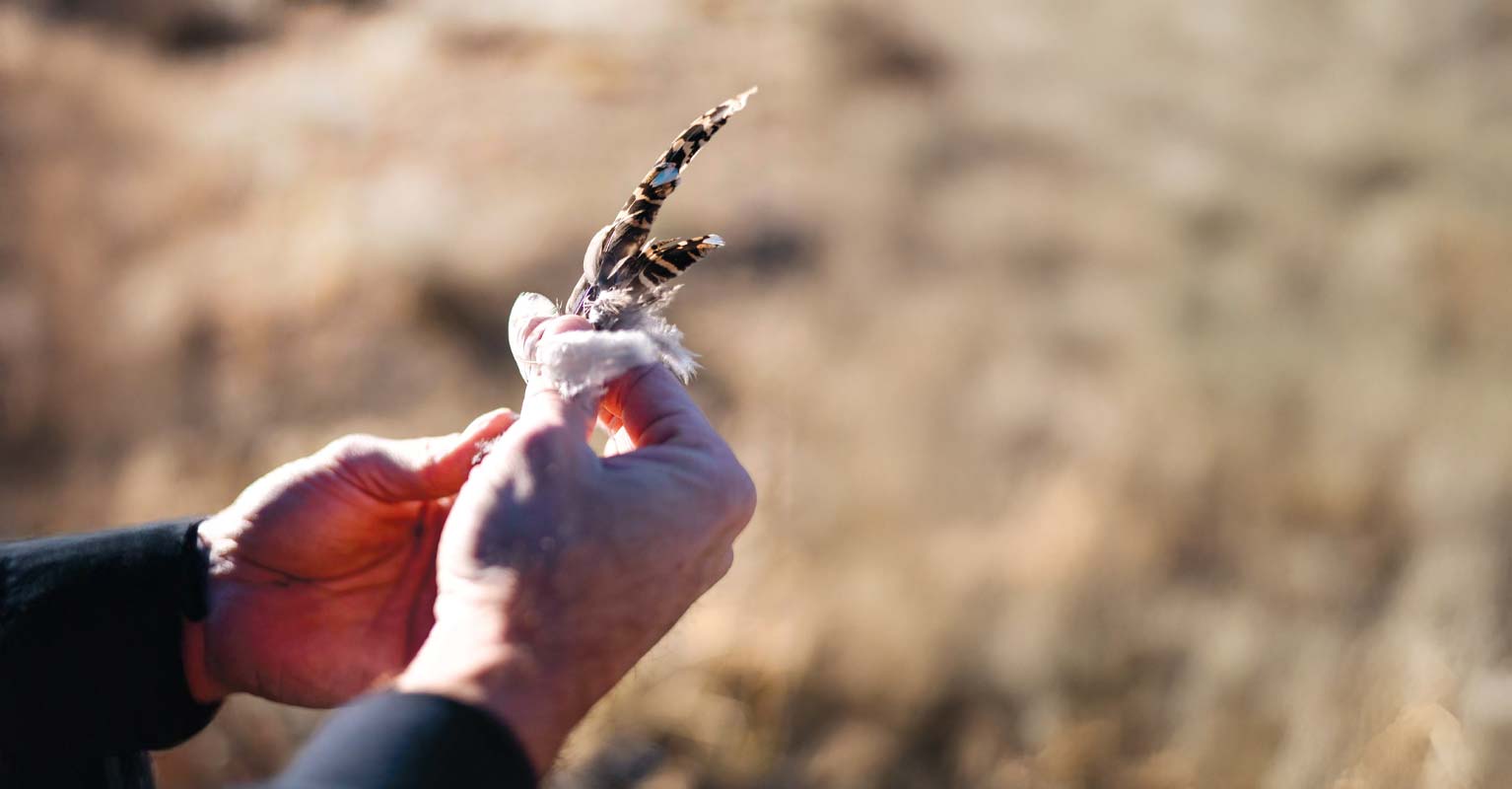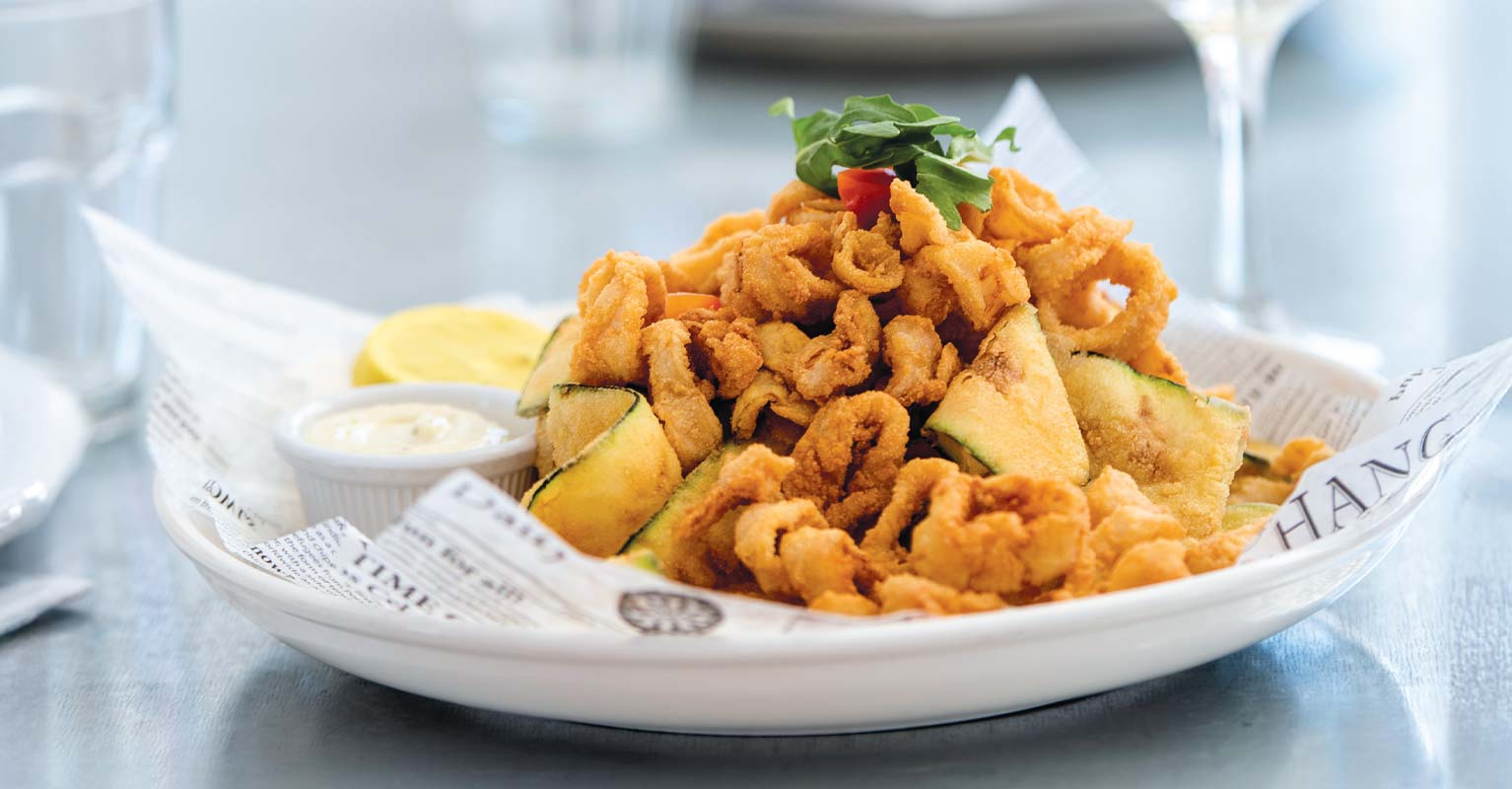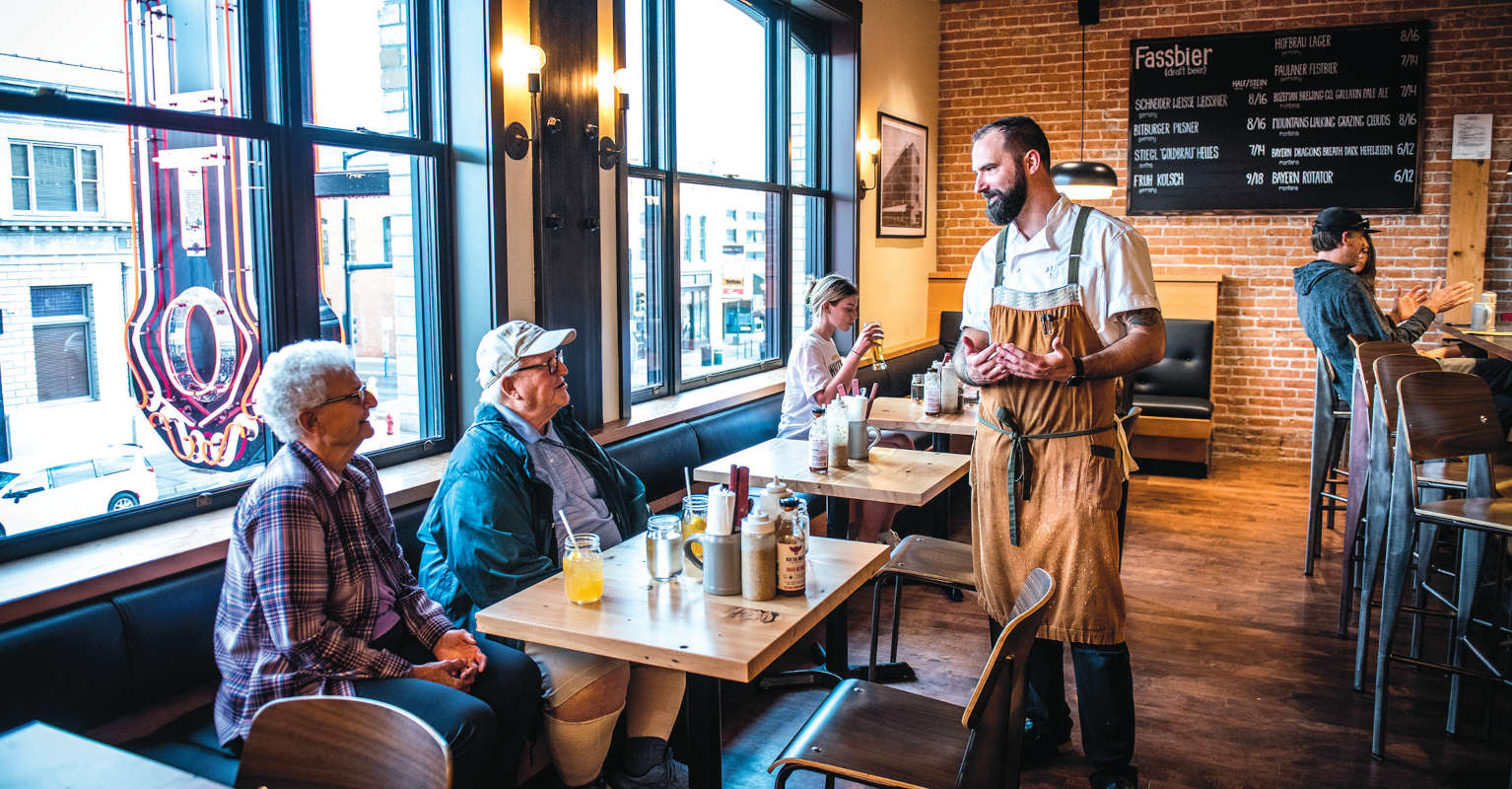Combat Vets Launch Little Belt Cattle Company
“Moove it! Ozzy, go get it!” On horseback, eight-year-old Anna Putnam, the eldest of Greg and Heidi Putnam’s three daughters, encourages the family’s Australian shepherd as she herds cattle on the Little Belt Cattle Company ranch in Martinsdale, Montana. “When we move them enough, we say, ‘Enough!’” Anna tells me. Her parents are supervising nearby, while a ranch hand rides alongside Anna.
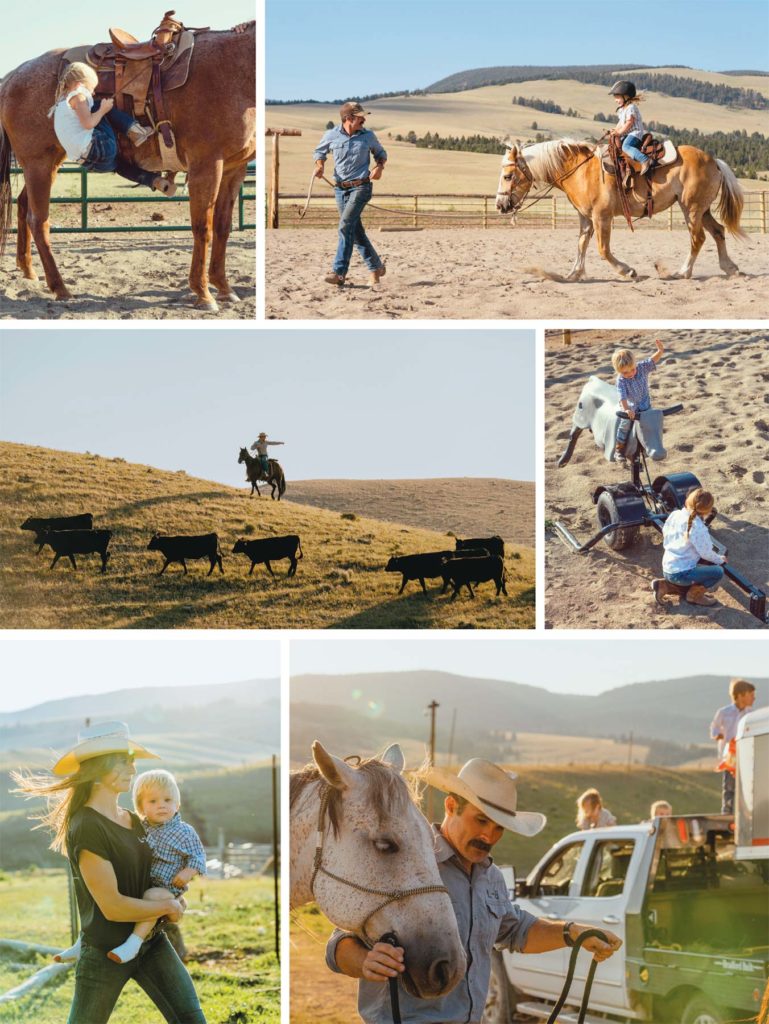
TEAM LITTLE BELT
Often, Anna rides with her best friend, Annabelle Sheehy, whose parents, Tim and Carmen Sheehy, along with the Putnams, own and operate this family enterprise. The Sheehys and Putnams met in Hawaii, where Tim and Greg were stationed as Navy SEALs. They grew their families along with their friendship and, when Tim transitioned out of the military after multiple injuries, he chose Belgrade as the place to establish roots. Initially working out of his barn, he built what became Bridger Aerospace, an aerial firefighting company, and Ascent Vision, a company that designs technological products for the military. After Greg’s final tour in the Navy, the Putnams settled in Bozeman and Greg joined the Ascent Vision team. Struggling with the amount of time spent inside after years in the military, he began working weekends on ranches.
In 2020, the guys merged their skill sets. Success in the tech industry enabled Tim to purchase the land that would become Little Belt Ranch and, in the middle of the pandemic, Tim and Greg founded Little Belt Cattle Co., which specializes in Wagyu and Angus beef production using regenerative ranching practices. “Learning the atmospherics in a business you don’t have a background in can be a blessing,” Tim says. “Experience is a great teacher, but can also be a prison if it’s rigid. Us coming in without preconceptions has been liberating and fun.
“None of us grew up as farmers,” he adds. “As a kid, I wanted to be in the military and also had a desire, like every little boy, to be a farmer or rancher. My injuries forced a fork in my career, and I’m grateful.”
Once in Montana, the Sheehys bought a 60-acre plot, where they began haying, raising chickens, horses, and goats, and eventually growing their own food. “It was a great environment for our four children (Walter, 2; Bruce, 4; Evelyn, 6; and Annabelle, 8),” Tim says. “They appreciate the earth and land, and the amount of work it takes to create that food. We homeschool, and found it was a wonderful opportunity to integrate schooling into farming. There are teaching opportunities in math, science, economics—there’s a hayfield; how many hay bales are there, and how many animals will it feed? How many plants can we fit in this garden bed?”
The Sheehys were already considering taking their hobby farm to the commercial level when an inflection point struck: empty shelves. Walking out of a grocery store, Tim encountered a disappointed shopper who hadn’t been able to buy hamburger meat. “I looked out and saw all these cows in nearby fields, yet he couldn’t get a pound of ground beef,” recalls Tim.
“COVID’s effect on the food supply sharpened our focus. We realized we wanted to make our local food supply chain more resilient. Little Belt Cattle Co. came from a labor of love for conservation and was born from the desire to be of service. The mission came from making sure our family is involved.”
“Post military service is a challenging time,” says Greg, who manages the ranch’s 20,000 acres nestled at the foot of the Little Belt Mountain range. “Finding the right career fit can be really hard on veterans and their families. Ranching has many parallels. It’s not a job that ends at 5 p.m., and your family needs to be as committed as you are. Everybody kicks in and helps, though maybe not the way they did 50 or 100 years ago.” As an example, Heidi handles social media, marketing, and retail for the ranch—concepts that were nonexistent several decades ago.
“Kids are part of the team, not just present,” says Tim. The older girls are eager to be up at 5 a.m. to join the cowboys, and little Bruce helps with haying. “Maybe one day we need help moving cattle, so Heidi or Carmen will babysit so the other can jump on a horse.”
A Naval Academy graduate and former Marine, Carmen wrestles calves at brandings and is very active in ranch operations, referring to herself as “chief enabling officer.” She says the kids’ participation is “really a matter of life or death; if the animals don’t get fed, they won’t make it. Responsibility is not given willy-nilly— they’ve earned their roles.”
On branding days, everybody is needed, and “the big ones take care of little ones,” Carmen says. “Family lines blur, and it becomes Team Little Belt.”
“We’re not giving you anything you can’t get anywhere else; we’re inviting you to support local ranchers, vets who fought for the country and are now trying to serve you organically.” —Tim Sheehy
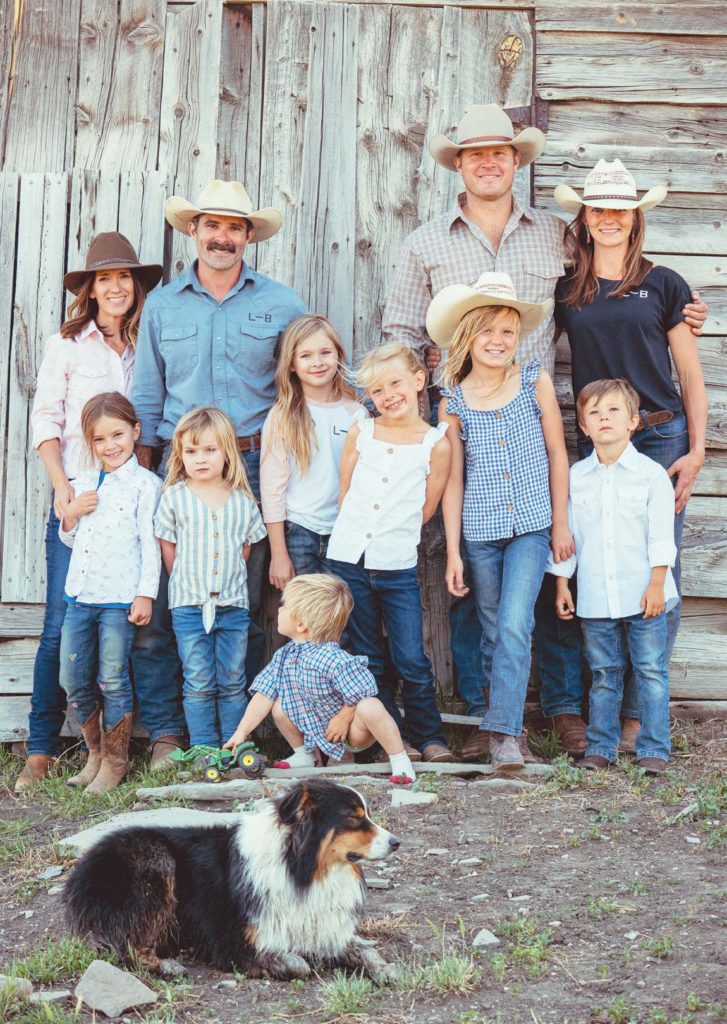
COMPLETING THE CHAIN
Little Belt is piloting a ranch-to-customer model via the Little Belt Burger Bar food truck, which serves great food, fast. “We want to let the meat show itself versus adding a ton of toppings,” Heidi says. This summer, the truck was parked in Bozeman three days a week at the Museum of the Rockies and was available for special events. When I visited, Anna, Annabelle, and Evelyn eagerly bounded back and forth to ferry food to hungry customers, joined by Anna’s sisters, Caroline (6) and Libby (4). Each wore a white/pink Little Belt shirt and cutoff shorts, Annabelle tromping in her well-worn cowgirl boots.
The families plan to open a brick-and-mortar burger bar at the Bozeman Yellowstone International Airport’s new plaza. The goal is to offer the highest-quality protein at family-friendly prices. “We absolutely want to provide cost-effective family dining,” Tim says. “We’re not giving you anything you can’t get anywhere else; we’re inviting you to support local ranchers, vets who fought for the country and are now trying to serve you organically.”
In addition to donating to veteran food banks, Little Belt Cattle Co. partners with Bear Hug Cattle Company, a nonprofit started in 2019 by former Army Captain Ben Minden, based in Manhattan, Montana. “We offer internships to guys or gals who want to learn the skills to get a job in the ranching industry after military service,” Minden explains. Participants spend four weeks in Bozeman, then five on the road. Bear Hug works with ranches in Montana, Wyoming, and Colorado.
“We provide free help, and the ranches offer knowledge and opportunities,” Minden says. “No intern I’ve ever had has even stepped on a horse. They go from that to setting up their own branding on day 30.”
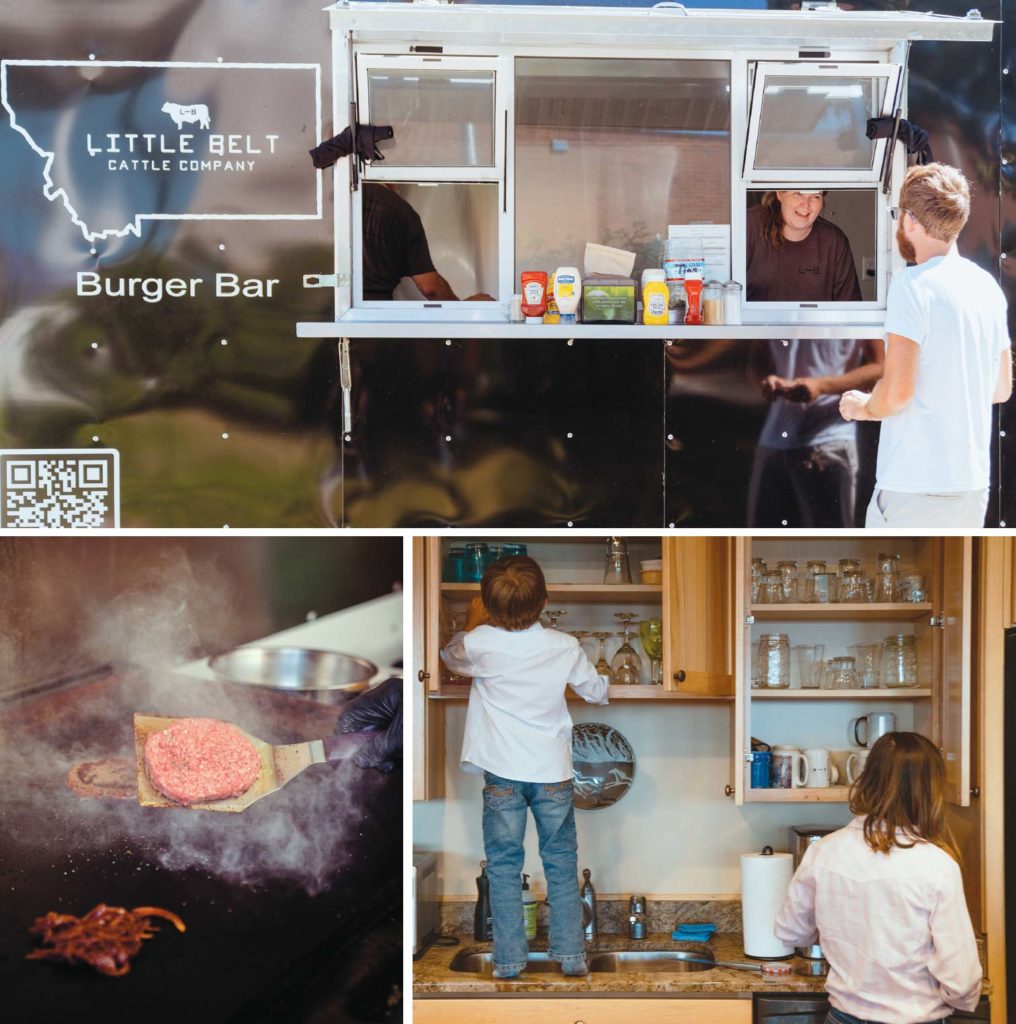
This summer, Minden had four vets in his program, and Little Belt was the first stop on the circuit. “We were the ranch where they could say, ‘Which way does my saddle go?’” laughs Greg. Th ey developed skills throughout the week and on the last day, they gathered, sorted, and branded 25 cattle, appreciating the time they had to learn the process before heading to other ranches where they’d be working with 500 to 1,000 head. Currently, Little Belt Cattle Co. has three full-time employees and hires additional help in the summer, with the goal of being 20 percent veteran staff ed.
“The people herding calves are cooking and serving [at the food truck],” Heidi says. “Our head of agriculture not only grows our hay—he comes and fl ips burgers.”
Little Belt Cattle Co. strives to bring a high-quality, Montana- made product into local communities, but how do you go from raising calves to producing a steak? “It’s very complicated to put really high-quality protein on your plate,” Greg says. “The traditional model is to sell cattle each fall; as a startup, we didn’t have the cattle pipeline. It takes years to build your herd and see a return on your investment.”
The Little Belt herd currently consists of 1,680 cow-calf pairs and yearlings. Their beef comes from cattle born and bred on the ranch, grazed on its native mountain grasslands, then grain-finished, since the ranchers feel it creates better- tasting meat.
“We’re building a sustainable supply chain in the state of Montana that goes directly from our ranch into our communities,” says Greg. “You can raise the best steak or burger, and if the consumer isn’t the greatest chef and burns it, they may think it was your meat. What we plan to do through our restaurant concept is complete the chain. We love and care for these animals, and then put them on your plate for you. We maintain ownership; we’re not buying and selling. We’re going through the entire process of the calf hitting the ground to the burger hitting your plate.”
In addition to building what they hope will become a multigenerational ranching operation, the Sheehy and Putnam families are building a lifestyle brand experience. “Lots of brands give an image, but it’s a façade built by a corporation that wants to create an illusion,” Tim says.
“People want that Montana-made product,” Greg adds. “We have a huge amount of respect and admiration for the families who have been doing this for 100 years, and hope to be doing it with them 100 years from now.” Tim invites consumers to engage with the mission and eff ort. “This is an enterprise started by vets, and run by families. People want to have a connection to products they buy; we’re trying to create that connection and, so far, it has been very successful.”


